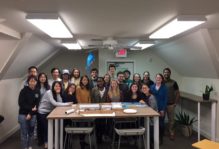Sustainability & Business: Adopting Sustainable Procurement Practices at William & Mary
By Justin Maynard ’23
This semester I was a Sustainability Ambassador with the Office of Sustainability. I was driven to become a Sustainability Ambassador by my passion for sustainability and I saw that this particular project would allow me to combine my interests in sustainability with my knowledge in business. I believe that for true sustainable change to be created, organizations must adopt sustainable practices, and that this project with William & Mary Procurement Services would help William & Mary adopt such practices. For my research project, I researched ISO: 20400 on sustainable procurement, and I analyzed William & Mary’s procurement services sustainable procurement efforts.
ISO standards are guidelines published by the International Organization for Standardization, and they give guidance on a variety of subjects. This particular standard, ISO: 20400, is on integrating sustainable procurement practices for organizations. Procurement is the part of a business that is responsible for purchasing goods and services.
My research project consisted of researching ISO: 20400 and comparing William & Mary’s procurement services to the suggestions in the standard. The process was started by reading over the standard and taking notes on the guidelines. After that was finished, I began my in-depth look at W&M procurement services. I started by combing through their website, downloading any and all related documents I could find.
Next began the hardest and by far the longest part of my process: writing my research paper. The standard is broken up into seven sections, four of which detail suggestions on sustainable procurement. These sections are understanding the fundamentals of sustainable procurement, integrating sustainability into the organization’s procurement policy and strategy, organizing the procurement function towards sustainability, and integrating sustainability into the procurement process. I structured my paper around the standard, providing my review of each section of the standard, and then giving my analysis of W&M’s procurement services for each standard.
As I cannot provide you with all of my analysis, I will leave you with some observations about W&M procurement services and suggestions I provided. First off, W&M is on the track to integrating sustainable priorities into procurement services, but still has work to do. One of the areas where W&M has excelled is in social sustainability, through the Small, Women, and Minority-Owned (SWaM) initiative. W&M has set a goal of having 42% of their discretionary purchases come from SWaM vendors, and in 2020 40% of discretionary spending was from SWaM vendors! Additionally, 90% of William & Mary purchases through procurement are 30-49% post-consumer recycled content, and 88% of electronic product expenditures are EPEAT Gold certified. While W&M has begun committing to sustainable procurements, there are still many steps. I have suggested that first W&M create more measurable goals for environmental sustainability, and ensure that these goals are located in the strategic procurement plan and other governing documents. William & Mary should integrate sustainability requirements into requests for proposals, allowing for W&M to verify that suppliers can meet sustainability requirements. In addition, W&M should include these requirements in contracts, which would bind suppliers to fulfill sustainability requirements that align with W&M’s values.
Lastly, I gave suggestions on sample language for contracts and requests for proposals. I used the Sustainable Facilities Tool as a resource. This was created by the General Service Administration’s Office of Federal High-Performance Green Buildings, and simplifies sustainable building and procurement practices. Their sample language for environmental programs contains different categories of goods. Additionally, there are documents and webpages (for almost any type of purchasable goods) detailing the percentage of the product that should be composed of sustainable materials. This assists procurement officials, as they do not need to be experts in the category of goods and can instead, consult this website. If it is not possible for suppliers to source all of their goods according to these standards, W&M could require a percentage of goods that adhere to the requirements defined in these standards, and over time increase the percentage eventually sourcing all goods according to these standards.
This project was a rewarding experience, having been able to present to the procurement services staff and make impactful suggestions that could be used by W&M. This experience introduced me to the various ways that sustainability can be adopted by organizations. Moving forward, I will continue to seek out opportunities at William & Mary to help the university adopt sustainable practices, and I hope to incorporate my learnings from this project into any professional jobs.



No comments.
Comments are currently closed. Comments are closed on all posts older than one year, and for those in our archive.